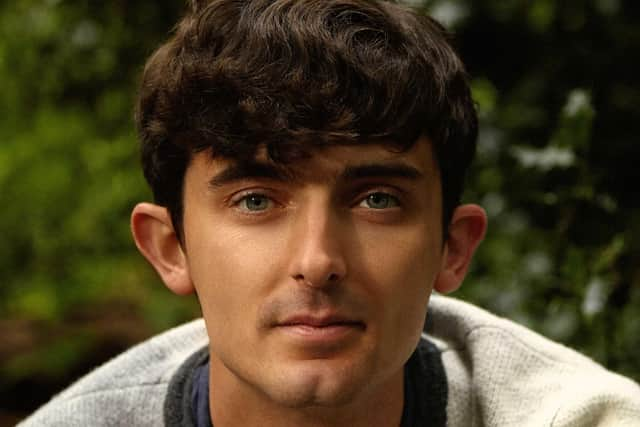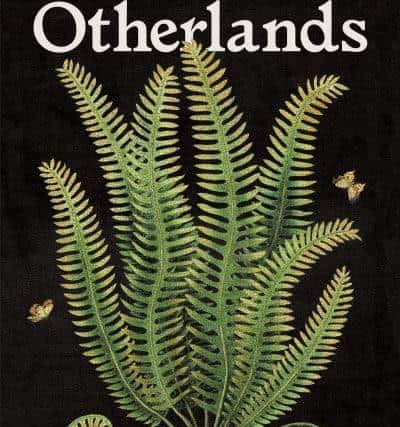Book review: Otherlands: A World In The Making, by Thomas Halliday


Like most little boys, I was obsessed with dinosaurs. I can still call into memory the illustrations in the Ladybird Dinosaur book – the triceratops fighting the tyrannosaurus, the pterodactyl with a fish in its beak, the clutch of hatching protoceratops eggs. I also had the Usborne Spotter’s Guide to dinosaurs, a remarkably difficult book in which to tick off sightings. Even now, at a loose end, I can while away hours poring over Zoe Lescaze’s Paleoart, a sumptuous history of how we have imagined the past. So this new book rather whetted my interest. Otherlands is an ingenious hybrid form of a book. In part it is akin to contemporary nature writing, but the twist is none of the landscapes, fauna and flora now exist. To that extent it is a work of immense imagination. But it is rooted firmly in the actual science – or science as it now stands, the author having won the Linnean Society Medal for the best doctorate in biological studies. It is a quite remarkable book, even if the dinosaurs only get a bit of a walk on part. Mind you, humans get less.
With such a vast field as “deep time”, such a book requires a robust structure, and Halliday’s solution is elegant. The reader starts with the injunction, “journeys have to start at home”, home here being the Pleistocene, 20,000 years ago, in Alaska on the so-called Mammoth Steppe. Each chapter is a snapshot of a particular place at a particular time, and we scroll back over the next 15 sections through the Cretaceous, Jurassic and Triassic, the Carboniferous and the Silurian, ending up in the Ediacaran, some 550 million years ago, in Australia. Along the way we encounter five mass extinction events. There is, of course, an afterword in a more polemical but nonetheless balanced style, about what we might discern of the planet’s future by understanding more about its past.
Advertisement
Hide AdIt requires something of a balancing act to conjure “not an endless expanse of unfathomable time, but… a series of worlds, simultaneously fabulous yet familiar”. On the one hand there is the recognisable – rivers flow, forests grow, life adapts, creatures die. On the other there is the frisson of sheer weirdness. There are two metre penguins and the surprising prevalence of sloths, now reduced somewhat in their circumstances and habitats. There is precise detail that enlivens and estranges the reader. No diplodocus, for example, ever saw grass, let alone a flower. Although there are birds in earlier forests, there is not as yet birdsong. What will be the Mediterranean in a landlocked, arid place. There is weather, but not as we know it. The eeriness of this is evoked throughout; perhaps no more so than in the account of the Chicxulub meteor impact with its rain of “hot glass spherule bullets”, nitric and sulphuric showers, and “decomposers taking over”: fungi have a field day among all those cadavers.


It is a book that examines a series of firsts, full in the knowledge that a scant fossil record means we can never definitively say “at this point”. What was the first hominid that was more like a modern human than a monkey? When did grass become so prevalent? When did sex first happen? And in the deepest of deep time, are those tiny marks evidence that something has just figured out walking? Time and again in the book, Halliday insists on two factors. Climate, and climactic changes, create niches, and life persists, indeed thrives on finding a niche. At the same time, and as a good antidote to “intentionality”, we are lumbered with adaptations made in the distant past. It is easier to modify something – say, bilateral symmetry – that start again from scratch. Life is more like editing than creating.
Some readers may find the technical terminology a little off-putting (I didn’t: I am more than happy to read about Bunostegos or Onychopterella), but this might be exacerbated by there being only a handful of images. Perhaps it is better that each reader imagines their own version of these strange lifeforms, but a slightly bigger budget may not have gone amiss. Perhaps it is climate change or perhaps pandemics, but we seem to have a number of books – Carl Zimmer’s Life’s Edge, Helen Scales’ The Brilliant Abyss, Peter Godfrey-Smith’s Other Minds, Peter Wohlleben’s The Secret Life OF Trees – that stress life is rather more extraordinary than we sometimes care to notice. One point sent a shudder through me. “For example, a butterfly might mimic the eyes of a hawk to scare away a songbird. Perhaps, preserved in the wings of ephemeral Oregramma, are some of the last mirrors to the gaze of a non-avian dinosaur”.
In terms of the afterword, Halliday pleasingly parries a sense of the precarious with the resilience of life. He has a knack for the apposite fact. What might future trilobote-like archaeologists make of the evidence that 60 per cent of all bird life on earth currently consists of domesticated (even imprisoned) chickens, were the next asteroid to come along. Life, Halliday says, will always find away. It just might not be us.
Otherlands: A World In The Making, by Thomas Halliday, Allen Lane, £20. Thomas Halliday will discuss Otherlands at Toppings bookshops in Edinburgh, 7 April, and St Andrews, 8, April, https://www.toppingbooks.co.uk/
A message from the Editor:
Thank you for reading this article. We're more reliant on your support than ever as the shift in consumer habits brought about by coronavirus impacts our advertisers.
If you haven't already, please consider supporting our trusted, fact-checked journalism by taking out a digital subscription at https://www.scotsman.com/subscriptions